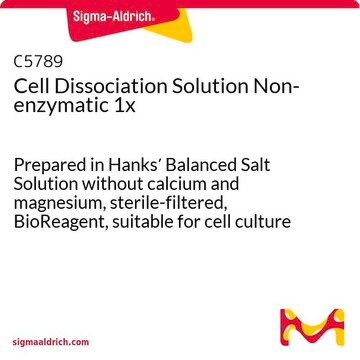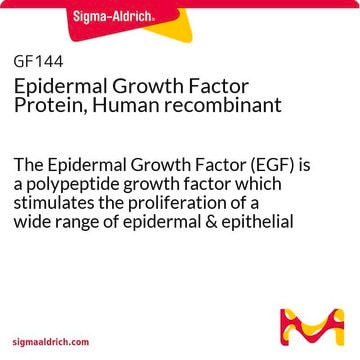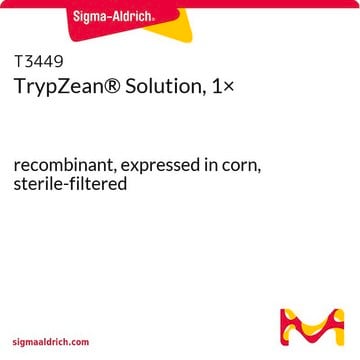Transportation information can be found in Section 14 of the product's (M)SDS.To access the shipping information for this material, use the link on the product detail page for the product.
C5914
Cell Dissociation Solution Non-enzymatic 1x
Prepared in phosphate buffered saline without calcium and magnesium, sterile-filtered, BioReagent, suitable for cell culture
Synonym(s):
Dissociation Solution
Select a Size
About This Item
Recommended Products
Quality Level
sterility
sterile-filtered
product line
BioReagent
form
liquid
concentration
1 ×
technique(s)
cell culture | mammalian: suitable
pH
6.9-7.1
shipped in
wet ice
storage temp.
2-8°C
Looking for similar products? Visit Product Comparison Guide
General description
related product
Storage Class Code
10 - Combustible liquids
WGK
WGK 3
Flash Point(F)
Not applicable
Flash Point(C)
Not applicable
Choose from one of the most recent versions:
Already Own This Product?
Find documentation for the products that you have recently purchased in the Document Library.
Customers Also Viewed
-
What is the Department of Transportation shipping information for this product?
1 answer-
Helpful?
-
-
Does Product C5914, Cell Dissociation Solution, contain EDTA?
1 answer-
Yes, it does contain EDTA; the concentration is proprietary.
Helpful?
-
-
When trypsin is used to detach cells, one usually adds fetal bovine serum (FBS) to the media. Should FBS be used with Product C5914, Cell Dissociation Solution?
1 answer-
No. FBS is used to inactivate trypsin. This product is not enzymatic, so there is no need to use FBS. The cells can be washed with phosphate buffered saline (PBS). When the cells are to be cultured, then one would need to add FBS.
Helpful?
-
-
Can one use Product C5914, Cell Dissociation Solution, with tissue?
1 answer-
We have only used with monolayer cell culture, and therefore we have no information on its usage with tissue.
Helpful?
-
-
Does Product C5914, Cell Dissociation Solution, work with epithelial cells?
1 answer-
It will work with most cell types.
Helpful?
-
Active Filters
Our team of scientists has experience in all areas of research including Life Science, Material Science, Chemical Synthesis, Chromatography, Analytical and many others.
Contact Technical Service












